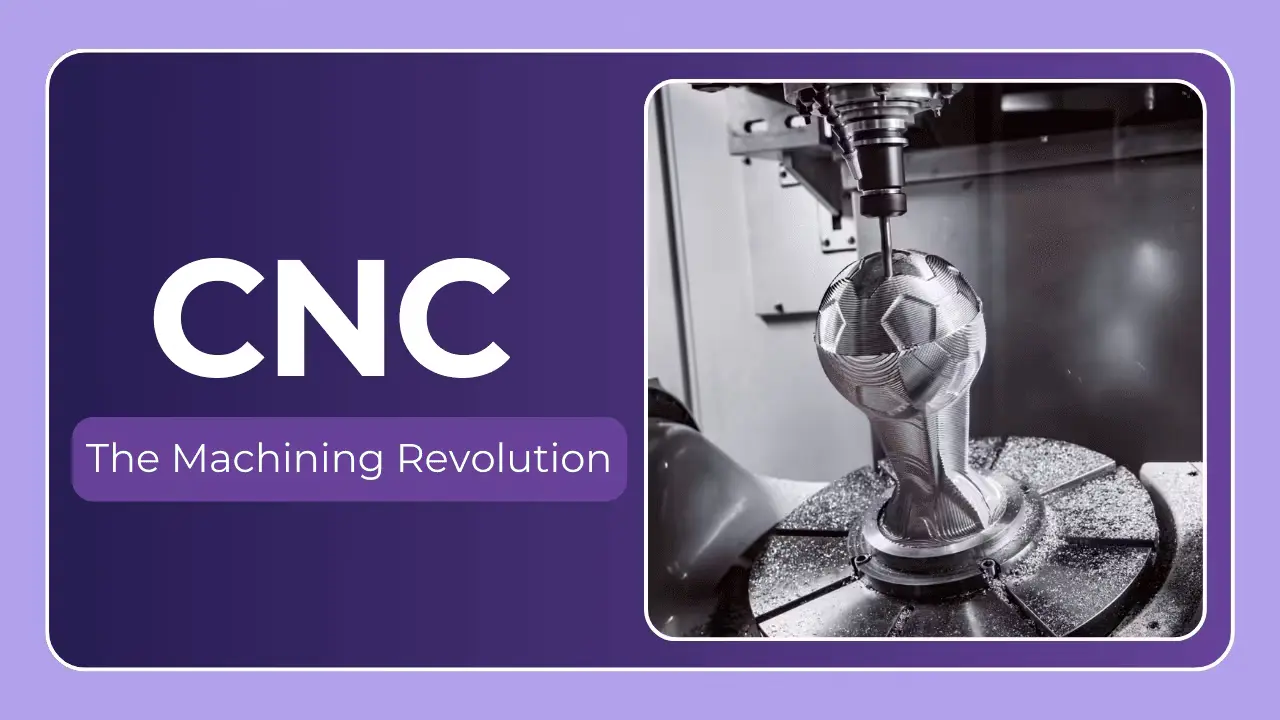Diving into the World of CNC Lathes: A Comprehensive Guide
Computer Numerical Control (CNC) lathes have revolutionized the manufacturing landscape, offering unparalleled precision, repeatability, and efficiency in creating cylindrical components. Whether you’re a budding engineer, a seasoned machinist looking to brush up on fundamentals, or simply curious about how things are made, understanding CNC lathe basics is crucial. At CNC MACHINING PTE. LTD, a leading five-axis CNC machining manufacturer in Singapore, we see firsthand the power and versatility of these machines daily. This article will provide a deep dive into the core principles, components, programming basics, and applications of CNC lathes.
What is a CNC Lathe and How Does it Differ from Traditional Lathes?
At its heart, a lathe is a machine tool that rotates a workpiece against a cutting tool. Traditional lathes rely on a skilled operator manually controlling the movement of the cutting tool to shape the material. This requires significant skill and experience, and can be prone to human error.
A CNC lathe, however, automates this process. Instead of manual control, the lathe is guided by pre-programmed computer instructions (G-code). This allows for complex geometries to be created with incredible accuracy and consistency, often without direct operator intervention during the machining cycle. The key difference lies in automation and precision. CNC lathes excel at producing large batches of identical parts, something incredibly challenging to achieve consistently with manual lathes.
Key Components of a CNC Lathe
Understanding the components of a CNC lathe is essential to grasping how it operates. Here’s a breakdown of the major parts:
- Headstock: This houses the spindle, motor, and gears that rotate the workpiece. Spindle speed is a critical parameter, measured in Revolutions Per Minute (RPM).
- Tailstock: Provides support to the workpiece, especially for longer parts, preventing deflection during cutting. It often features a center that aligns with the headstock center.
- Carriage: Holds the cutting tool(s) and moves along the lathe’s ways (rails) to perform machining operations.
- Turret: A rotating tool holder mounted on the carriage. Modern CNC lathes often feature powered turrets, allowing for rapid tool changes during a machining cycle. The number of tools a turret can hold varies, typically ranging from 8 to 12 or more.
- Ways (Rails): Hardened steel surfaces that guide the carriage and tailstock movements.
- Control Panel/CNC Controller: The "brain" of the machine. This is where the G-code program is loaded and executed, and where the operator monitors and controls the machining process. Popular controllers include Fanuc, Siemens, and Haas.
- Chip Conveyor: Removes chips (metal shavings) from the machining area, keeping the workpiece and machine clean.
- Coolant System: Circulates coolant (typically a mixture of water and oil) to lubricate the cutting tool, cool the workpiece, and flush away chips.
Common CNC Lathe Operations
CNC lathes are capable of performing a wide range of machining operations. Here are some of the most common:
- Turning: Reducing the diameter of the workpiece. This is the most basic lathe operation.
- Facing: Machining the end of the workpiece to create a flat surface.
- Boring: Enlarging an existing hole.
- Drilling: Creating a hole in the workpiece.
- Threading: Cutting threads (internal or external) on the workpiece.
- Knurling: Creating a textured surface for improved grip.
- Grooving: Cutting a groove into the workpiece.
- Parting/Cut-off: Cutting the finished part from the stock material.
- Contouring: Creating complex shapes by combining multiple turning and facing operations.
Understanding G-Code: The Language of CNC Lathes
G-code is the programming language used to instruct CNC machines. It consists of a series of commands that tell the machine where to move, how fast to move, and what operations to perform. Here are a few fundamental G-code commands:
| G-Code | Description | Example |
|---|---|---|
| G00 | Rapid Traverse | G00 X10.0 Z5.0 (Move quickly to X=10.0, Z=5.0) |
| G01 | Linear Interpolation (Cutting) | G01 X5.0 Z0.0 F100 (Move linearly to X=5.0, Z=0.0 at a feed rate of 100 mm/min) |
| G02 | Circular Interpolation (Clockwise) | G02 X10.0 Z0.0 I5.0 J0.0 (Cut a circular arc clockwise to X=10.0, Z=0.0 with a center offset of I=5.0, J=0.0) |
| G03 | Circular Interpolation (Counter-Clockwise) | G03 X10.0 Z0.0 I5.0 J0.0 |
| G28 | Return to Home Position | G28 G91 Z0 (Return to machine home in Z-axis) |
| M03 | Spindle Start Clockwise | M03 S1000 (Start spindle clockwise at 1000 RPM) |
| M05 | Spindle Stop | M05 |
| T0101 | Tool Selection | T0101 (Select tool number 1, offset 1) |
This is just a small sample of the many G-code commands available. Modern CAM (Computer-Aided Manufacturing) software simplifies the programming process by automatically generating G-code from a 3D model.
Materials Commonly Machined on CNC Lathes
CNC lathes are incredibly versatile and can machine a wide variety of materials, including:
- Aluminum: Lightweight and easy to machine.
- Steel (Various Alloys): Commonly used for high-strength parts.
- Stainless Steel: Corrosion-resistant and durable.
- Brass: Excellent machinability and conductivity.
- Copper: Good conductivity and corrosion resistance.
- Plastics (e.g., Delrin, Acrylic): Used for various applications requiring specific properties.
- Titanium: High strength-to-weight ratio, but more challenging to machine.
The Role of CAM Software
While it’s possible to write G-code manually, it’s a time-consuming and error-prone process. CAM software bridges the gap between design and manufacturing. It allows you to:
- Import 3D models: From CAD (Computer-Aided Design) software.
- Define machining strategies: Select toolpaths, cutting parameters, and machining operations.
- Simulate machining: Visualize the machining process to identify potential problems.
- Generate G-code: Automatically create the G-code program for the CNC lathe.
Popular CAM software packages include Mastercam, Fusion 360, and SolidCAM.
Applications of CNC Lathes
CNC lathes are used in a vast array of industries, including:
- Aerospace: Manufacturing precision components for aircraft engines and structures.
- Automotive: Producing engine parts, transmission components, and other critical parts.
- Medical: Creating surgical instruments, implants, and medical devices.
- Oil & Gas: Machining components for drilling equipment and pipelines.
- Electronics: Manufacturing connectors, housings, and other electronic components.
- General Engineering: Producing a wide range of custom parts for various applications.
Conclusion: The Future of Turning is CNC
CNC lathes represent a significant advancement in manufacturing technology. Their precision, automation, and versatility make them indispensable for producing high-quality parts efficiently. As technology continues to evolve, we can expect to see even more sophisticated CNC lathes with features like multi-axis capabilities, advanced sensors, and integrated automation systems.
At CNC MACHINING PTE. LTD, we are committed to staying at the forefront of CNC machining technology. Our investment in advanced five-axis CNC machining equipment, coupled with our experienced team, allows us to deliver exceptional results for our clients. If you have a metal parts manufacturing challenge, or require one-stop post-processing and finishing services, we encourage you to contact us. Customize your precision parts now at the best price! We are confident that we can provide a solution that meets your specific needs and exceeds your expectations. The future of turning is here, and it’s powered by CNC.




